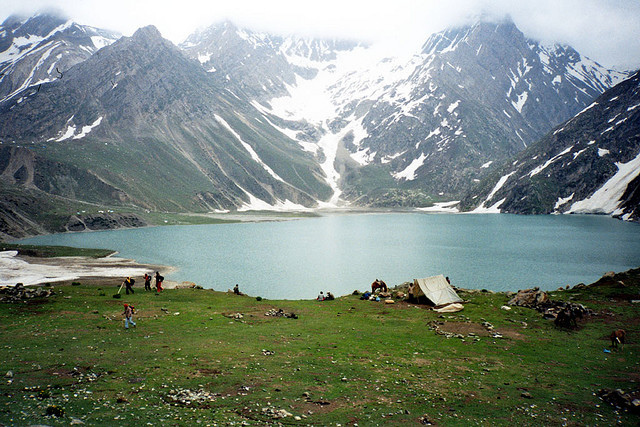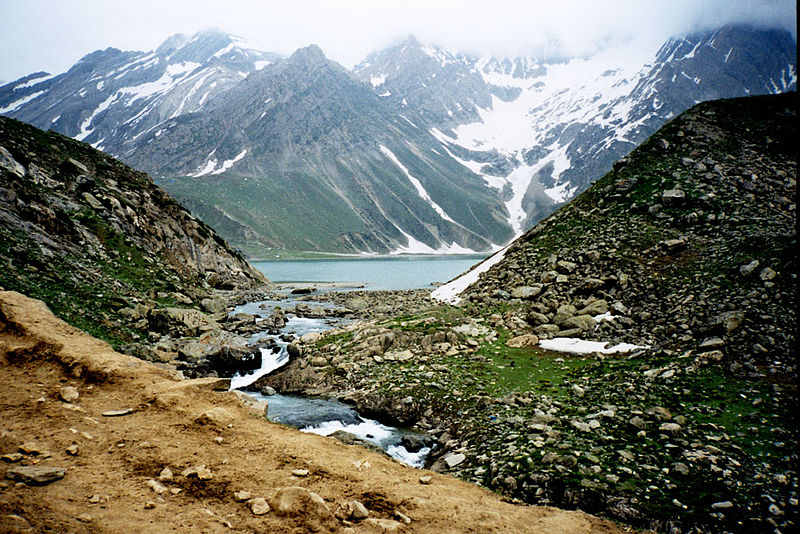The Sheshnag Lake is the famous lake that all Amartnath Yatris are likely to visit on route to the Amarnath Shrine. It nestles in the higher reaches of the Himalayas in the state of Jammu and Kashmir, advice and situated at an elevation of 12, story 000 feet above the mean sea level.

The Lake derives its name from the Hindu mythology that considers Sheshnag as the primal being of creation and King of the Nagas, or the serpent God with six heads. Locals believe that Sheshnag dug this lake way back in time and even today, Sheshnag lives in the waters of the lake.

Many times Sheshnag is shown with 5 heads and at others with 6, 7 or even hundreds of heads. But, as the Sheshnag Lake is surrounded by seven mountain peak, Hindus believe them to be the seven heads of the serpent God.
The Lake is among the most ancient pilgrim places in the country, visited by hundreds of devotees every year. Most people only pass it by on their way to the Amartnath Shrine, but there are others who trek up the mountains to camp at the lake site only.

The Sheshnag Lake can only be visited for a few months during the year, after which it freezes. Even during peak summers, the water of the lake generally remains cold enough to make a bath in its waters almost next to impossible.
The difficult weather conditions and rough terrain of the lake keep it cut off from the rest of the world. This is the reason why it still remains less explored. Its waters are pure, and fresh. The surrounding environment is still clean and untouched by any form of human destruction.
The lake has been in existence for the last many thousands of years, with no date of its origin mentioned anywhere. It is 250 feet deep and covers an area measuring 5 square miles.
Reaching Sheshnag is a difficult task. The closest town is Chandanwadi. It is 55 km from Pahalgam. Regular buses ply from Pahalgam to Chandanwadi, and reaching this small village is not a problem. But, once you begin with your journey ahead to the lake, the going can get tricky and tough.
There are no roads, and one has to either depend on ponies or trek to the lake top. Ponies are also available only during a brief time during the summer season, after which walking is the only option.
Travelers have to cross the valley called Pishughati, which means the valley of slippery earth and water. The terrain is indeed difficult, and there are many spots along the way, which are so narrow, they allow only one person to cross the valley at a time.
The walk up the mountains is worth all the risk you take. The views of the valleys and the snow clad peaks in the distance are magnificent and unforgettable. Just a mile ahead of the lake is a place called the Vayujan. It is famous for being a reclusive spot for meditation and tap. Sadhus are often spotted meditating here, and sometimes all they wear is a dhoti. You may also come across the Naga Sadhus, who meditate here absolutely naked.
Many foreigners are intrigued by the Sheshnag Lake, its location and history, and often camp here to gain firsthand experience of its mesmerizing beauty and ambiance.
There are no hotels or guest houses around the lake, not even home stays. Devotees and trekkers have to return back to Chandanwadi, or carry all camping equipment with them in order to put up for the night. There are a few shops on route that serve hot beverages, but as you approach the Lake, they become fewer. Also, except for the peak tourist season, one may not even find them open.
